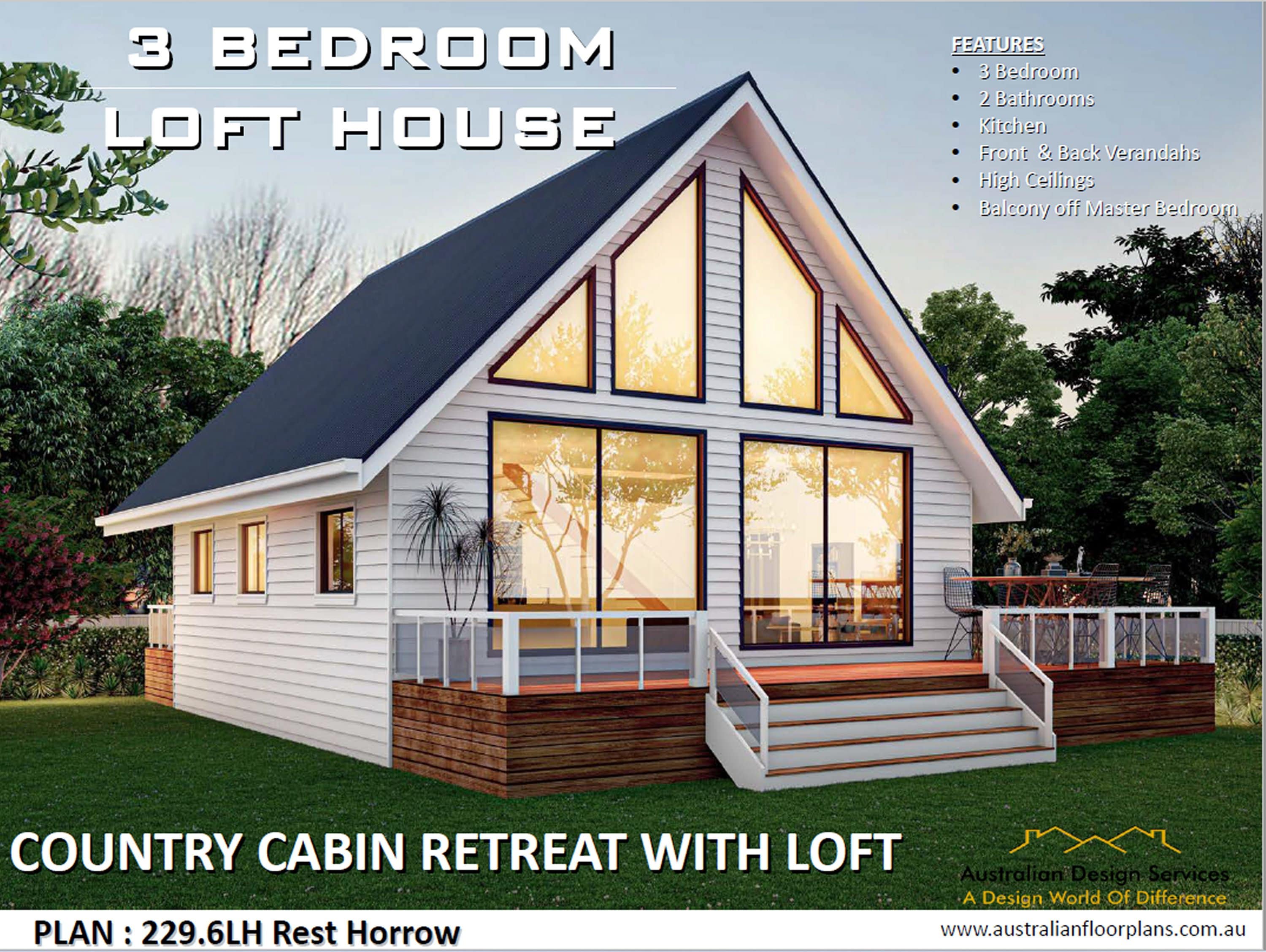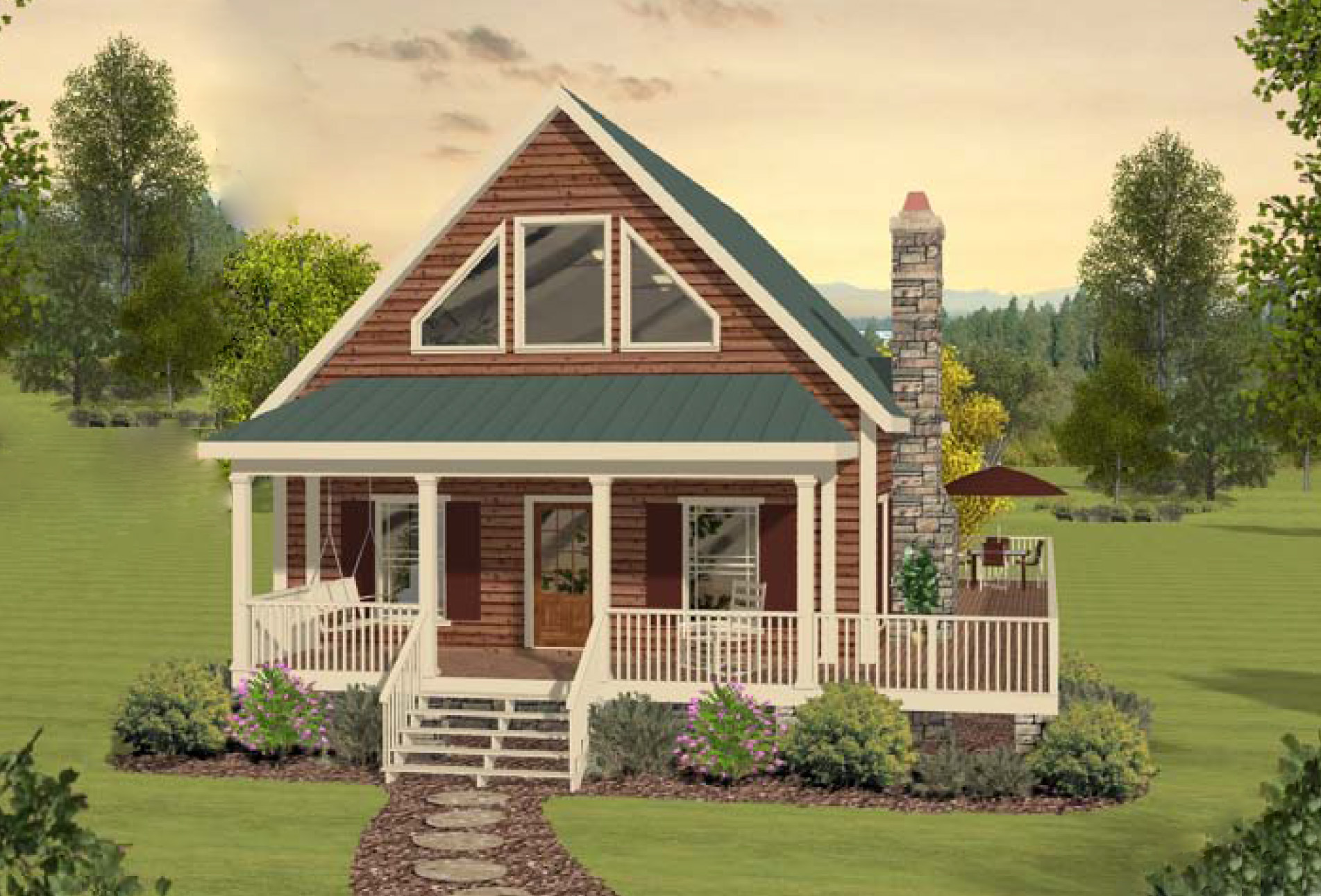The Allure of a 2-Bedroom Cottage with Loft

The charm of a 2-bedroom cottage with loft lies in its ability to maximize space and offer versatility in a cozy and inviting setting. These homes offer a unique blend of traditional cottage appeal and modern living, catering to a variety of lifestyles and preferences.
2 bedroom cottage plans with loft – The loft space in a cottage serves as a flexible area that can be adapted to suit individual needs. It provides a distinct separation from the main living areas, allowing for quiet moments of solitude or creative pursuits.
Advantages of a Loft Space in a Cottage, 2 bedroom cottage plans with loft
The loft space in a cottage offers a multitude of advantages, making it a valuable asset for homeowners.
- Guest Room: The loft can be transformed into a comfortable guest room, providing a private and secluded space for visitors. This allows homeowners to maintain their privacy while offering a welcoming environment for guests.
- Home Office: For those who work from home, the loft can serve as a dedicated home office space. The separation from the main living areas helps to create a focused and productive work environment.
- Creative Studio: The loft’s unique layout and often-abundant natural light make it an ideal space for creative pursuits. It can be used as an artist’s studio, a music room, or a hobby workshop.
Comparing a 2-Bedroom Cottage with Loft to a Traditional 2-Bedroom House
When comparing a 2-bedroom cottage with loft to a traditional 2-bedroom house, it’s important to consider the pros and cons of each option.
| Feature | 2-Bedroom Cottage with Loft | Traditional 2-Bedroom House |
|---|---|---|
| Space | Smaller footprint, but maximized vertical space with loft | Larger footprint, typically more horizontal space |
| Cost | Generally less expensive to build or purchase | Typically more expensive to build or purchase |
| Maintenance | Lower maintenance requirements due to smaller size | Higher maintenance requirements due to larger size |
| Versatility | Flexible loft space can be adapted to various needs | Less flexible space allocation, typically fixed rooms |
| Style | Charming and cozy, often with rustic or farmhouse elements | More diverse architectural styles, from modern to traditional |
Design Considerations for 2-Bedroom Cottage Plans with Loft: 2 Bedroom Cottage Plans With Loft

Designing a 2-bedroom cottage with a loft requires careful consideration of space utilization, natural light, and the overall aesthetic. The loft provides additional living space, but its design must complement the ground floor and seamlessly integrate with the surrounding environment.
Optimizing Space and Natural Light
The layout of a 2-bedroom cottage with a loft should prioritize maximizing space and natural light. Open floor plans can create a sense of spaciousness, while strategically placed windows and skylights enhance natural light penetration.
- Open Floor Plan: An open floor plan between the living room and kitchen can visually expand the space, making it feel larger and more inviting. This layout allows for easy movement and interaction between these areas.
- Strategic Window Placement: Windows strategically placed in the living room, bedrooms, and loft can maximize natural light, creating a bright and airy atmosphere. Large windows can provide stunning views of the surrounding landscape.
- Skylights: Skylights can bring natural light into the loft area, which can often be darker due to its location. This can create a unique and inviting space, especially for bedrooms or reading nooks.
Kitchen Design
The kitchen is the heart of any home, and in a cottage with a loft, it is essential to create a functional and stylish space.
- Compact Kitchen Layout: Compact kitchens are ideal for cottages, utilizing space efficiently. L-shaped or galley kitchens are popular choices, maximizing storage and counter space within a limited footprint.
- Built-in Appliances: Built-in appliances, such as ovens, microwaves, and dishwashers, can save space and enhance the overall design aesthetic.
- Open Shelving: Open shelving can add a touch of rustic charm to the kitchen, while also providing additional storage space.
Living Room Design
The living room should be a cozy and inviting space, where residents can relax and entertain guests.
- Fireplace: A fireplace can be a focal point in the living room, creating a warm and inviting atmosphere. It can also be a practical source of heat during colder months.
- Comfortable Seating: Comfortable seating arrangements are essential for a relaxing living room. Sofas, armchairs, and ottomans can provide ample seating for family and friends.
- Natural Materials: Using natural materials like wood, stone, and leather can create a warm and inviting ambiance in the living room, complementing the cottage aesthetic.
Bedroom Design
Bedrooms in a cottage with a loft should be comfortable and peaceful retreats.
- Loft Bedrooms: Loft bedrooms can be designed to be cozy and intimate, offering a sense of privacy and seclusion. They can be furnished with a bed, nightstands, and a small desk or dresser.
- Natural Light: Natural light is essential for creating a comfortable and inviting bedroom. Windows can provide views of the surrounding landscape, while skylights can bring in natural light from above.
- Storage Solutions: Storage solutions are essential for maximizing space in bedrooms, especially in a loft where space may be limited. Built-in closets, under-bed storage, and wall-mounted shelves can provide ample storage space.
Bathroom Design
The bathroom should be a functional and stylish space, designed for comfort and relaxation.
- Compact Layout: Compact bathrooms are ideal for cottages, maximizing space while providing all the essential amenities.
- Shower Stall: A shower stall can save space compared to a bathtub, while still providing a comfortable and relaxing showering experience.
- Natural Materials: Using natural materials like stone, wood, and tile can create a spa-like ambiance in the bathroom, complementing the cottage aesthetic.
Considering the Landscape and Environment
The design of a 2-bedroom cottage with a loft should be in harmony with the surrounding landscape and environment.
- Site Orientation: The cottage should be oriented to maximize natural light and ventilation, taking into account the direction of the sun and prevailing winds.
- Local Materials: Using local materials can help the cottage blend seamlessly with the surrounding environment, reducing the impact on the ecosystem.
- Sustainable Features: Incorporating sustainable features, such as solar panels, rainwater harvesting systems, and energy-efficient appliances, can reduce the cottage’s environmental footprint.
Building a 2-Bedroom Cottage with Loft

Building a 2-bedroom cottage with loft is a rewarding project that allows you to create a unique and charming home. The process involves several stages, from planning and design to construction and finishing. This guide provides a comprehensive overview of the key aspects of building a 2-bedroom cottage with loft, focusing on practical tips, cost considerations, and the necessary permits.
Foundation
The foundation is the base of your cottage and must be strong enough to support the weight of the structure. The type of foundation required will depend on the soil conditions and the local building codes. Common foundation types for cottages include:
- Slab foundation: This is a simple and cost-effective option, suitable for stable soil conditions. It involves pouring concrete directly onto the ground, creating a solid base for the walls and floors.
- Crawl space foundation: This type of foundation provides space for utilities and ventilation. It involves building a raised platform with a crawl space underneath, which can be accessed for maintenance.
- Basement foundation: This option provides additional living space below ground level. It requires excavation and involves constructing walls and a floor for the basement.
Framing
The framing provides the structural support for the walls, roof, and floors of your cottage. It is typically made of wood, though steel framing is also available. The framing process involves assembling the walls, roof trusses, and floor joists, which are then covered with sheathing and siding.
- Wall framing: The walls are typically constructed using 2×4 or 2×6 lumber, depending on the desired insulation and structural requirements. The framing members are spaced 16 or 24 inches apart and are connected with nails or screws.
- Roof framing: The roof is typically framed using trusses, which are pre-engineered assemblies of wood or metal that provide support for the roof sheathing and shingles. The truss design will depend on the roof pitch and the snow load requirements in your area.
- Floor framing: The floor joists are typically made of 2×10 or 2×12 lumber, spaced 16 or 24 inches apart. They are supported by beams or posts and provide a solid base for the flooring.
Roofing
The roof protects your cottage from the elements and is an important part of the overall design. The roofing system consists of the roof sheathing, underlayment, and shingles. The type of roofing material you choose will depend on your budget, the style of your cottage, and the local climate.
- Roof sheathing: The roof sheathing is a layer of plywood or OSB that is attached to the roof framing and provides a solid base for the underlayment and shingles.
- Underlayment: The underlayment is a layer of felt or synthetic material that is installed over the roof sheathing and helps to prevent water damage in case of leaks.
- Shingles: The shingles are the outermost layer of the roofing system and provide weather protection. There are many types of shingles available, including asphalt shingles, metal shingles, and slate shingles.
Estimated Costs
The cost of building a 2-bedroom cottage with loft will vary depending on the size, location, and finishes. However, you can expect to spend between $100,000 and $250,000 for a typical cottage.
- Materials: Materials account for a significant portion of the overall cost and will vary depending on the choices you make. For example, using high-end finishes or sustainable materials will increase the cost.
- Labor: Labor costs can be significant, especially if you hire a contractor. You can save money by doing some of the work yourself, but it’s important to have the necessary skills and experience.
- Permits: Building permits are required for all new construction projects and can vary in cost depending on the location.
Obtaining Permits
Before you begin construction, you need to obtain the necessary permits from your local building department. The permitting process typically involves submitting plans and specifications for review, and obtaining inspections at various stages of construction.
- Building permit: This permit allows you to begin construction and ensures that your project meets local building codes.
- Electrical permit: This permit is required for all electrical work, including wiring, outlets, and fixtures.
- Plumbing permit: This permit is required for all plumbing work, including water lines, sewer lines, and fixtures.
